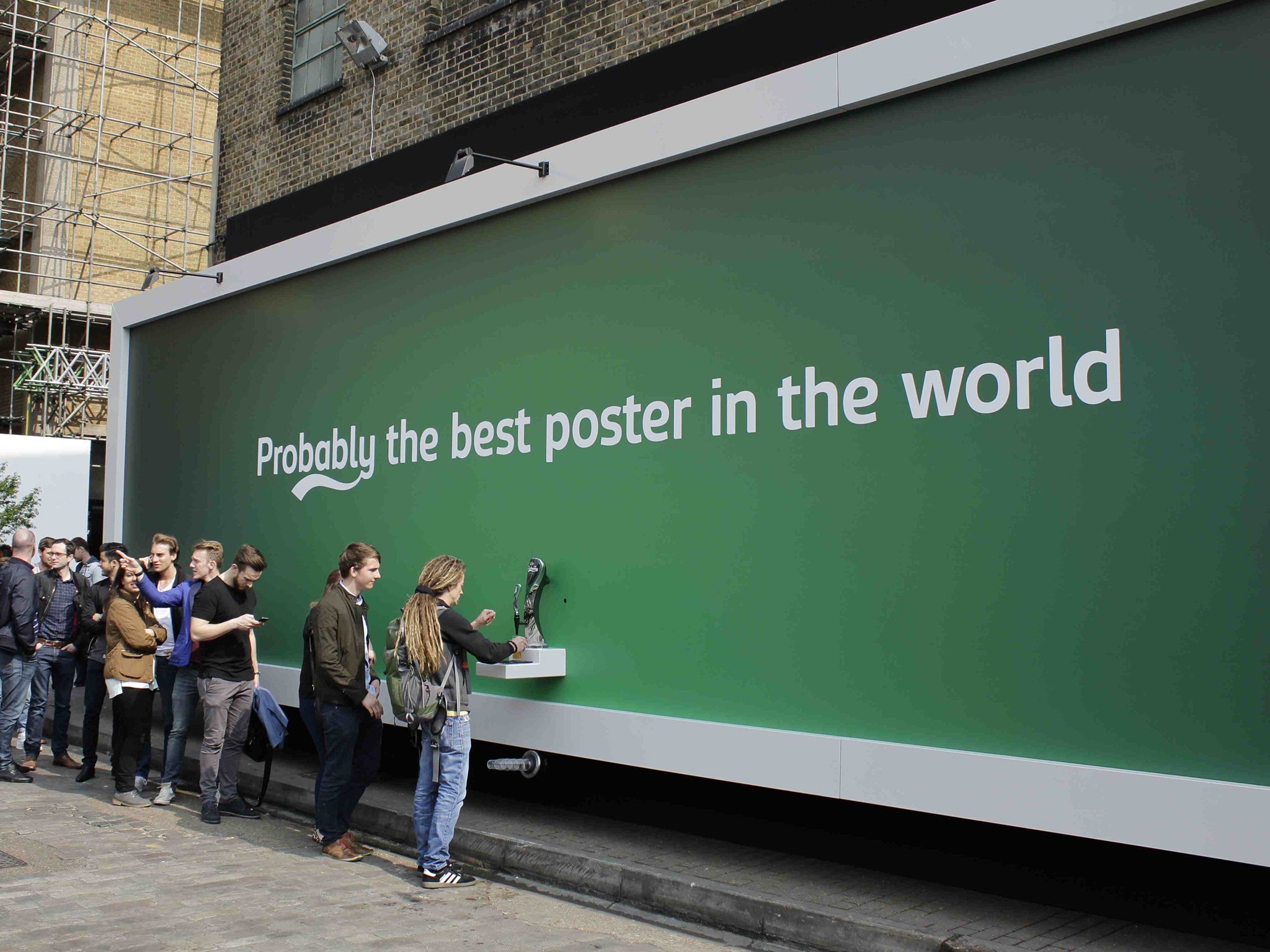Carlsberg billboard on Brick Lane features built-in pump that dispenses free beer
Samuel Muston explains why it pays to advertise shock-and-awe food

If you were walking down London's Brick Lane on Wednesday lunchtime, you would have seen a queue of people standing by a billboard: this billboard was dispensing beer to passers-by.
As part of its "If Carlsberg Did" campaign, the Danish firm put up the billboard outside the Truman Brewery, with a built-in pump from which punters could fill their boots with beer brewed in Northampton, and also possibly spill it on them.
It is a stunt grown from the same seeds as what Barb Stuckey, author of Taste: Surprising Stories and Science about Why Food Tastes Good, calls "shock and awe foods".
And these look-at-me comestibles are on the rise (though not all examples are so plainly stunt-ish as Carlsberg's effort). There have been innumerable cases in the past five years. Who can forget the 2,880-calorie Pizza Hut Cheeseburger Pizza Crust creation of 2013? Or indeed that other Pizza Hut creation that surpasseth all understanding: the Hot Dog Stuffed Crust. Taco Bell's Taco Locos is another that lingers in the mind, and possibly on the taste buds of those who ate it, which is a taco/Dorito hybrid.
This motley platoon is united and animated by excess. It is silly and excessive to dispense booze from a poster on a street corner, just as much as it is absurd and extreme to create a pizza which has all the calories a coal miner would need for a day at the pit face.
Carlsberg aside, shock foods and drinks also usually tend to merge two separate types of food – hot dogs with pizza, say – and then revel in the effect, like a child pouring a whole tube of chocolate sauce on vanilla ice cream. We are in the age of the gross, in every sense of the word.
What to make of it all? Well, a surface reading of the phenomena might run like this: they are a response to the girdling of the world by health-food propaganda; and the brands are merely breathing life into their customer's gastronomic daydreams. There is an undeniable element of revelry in these foods, though I would question whether the world really has been waiting, spoon at the ready, for a taco with some Dorito dust on it. But there is something more going on, too.
Yesterday, I received an invitation to an opening party. It came in the form of small cardboard box containing a dart – it was for a "new kind of pub" – and I thought, "odd" and so I took a picture and put it on Instagram. That driving urge to share on social media is what gets the marketing men to get the R&D departments to create these foods.
There is no denying the novelty of the products (or the event, for that matter). But it is not done from a desire to improve what they offer – merely to advertise. Stunt food is simply about making the consumer a shop window. Twitter and Instagram accounts filled with silly pictures of silly food mean a company can spend less on advertising. Whether that is a good thing depends which side of the fast-food counter you are standing on.
Join our commenting forum
Join thought-provoking conversations, follow other Independent readers and see their replies
Comments